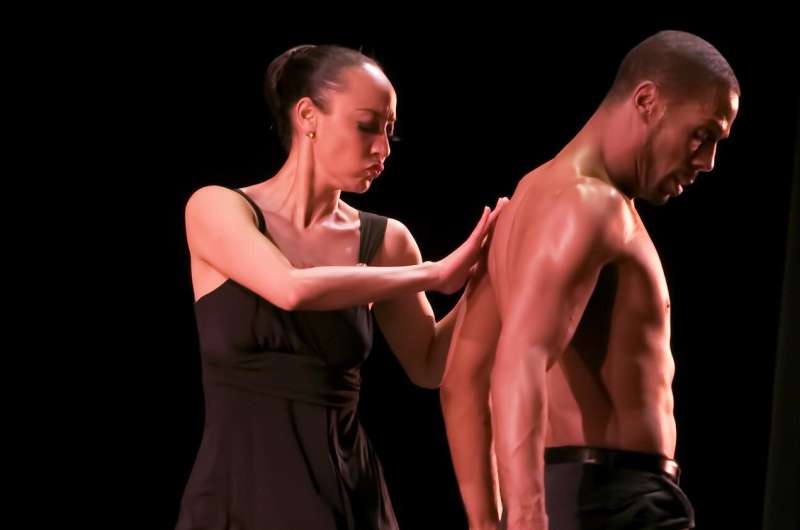Wearable sensor finds dancers are dancing through pain

A new Curtin University-developed wearable sensor system has tracked the movement of dancers, providing valuable insights into how they adapt to dance through disabling pain.
The study, published in PLOS ONE, analyzed the movement of 52 pre-professional ballet and contemporary dance students from the Western Australian Academy of Performing Arts (WAAPA). The wearable sensor system was developed as part of a collaboration between the Curtin School of Allied Health and the Curtin Institute for Computation.
Lead researcher Ph.D. student and former professional ballerina Danica Hendry, from the Curtin School of Allied Health, said that while almost all dancers experienced pain, only half of them had to stop or modify their movements.
"Fifty out of the 52 dancers said they experienced pain, with 26 reporting that this pain impacted their training/performance. Our findings indicate that the dancers are often able to continue dancing when in pain, and do so by adapting their movements, such as reducing their load," Ms. Hendry said.
"Despite a high prevalence of musculoskeletal pain, dancers' levels of pain severity and disability was generally low with the lower back and ankle/foot reported as most common."
Ms. Hendry said that existing measures, such as activity diaries and schedules, did not capture the specific movements that the dancers performed.
"Previous research exploring dancers' movement quantity has focused on measuring workload from simply looking at the daily time spent dancing," Ms. Hendry said.
"Wearable sensors have more recently been used to determine the exercise intensity of dancers during their daily training, demonstrating that while dancers participate in several hours of training per day, the majority of this time is spent doing 'low to medium intensity' exercise.
"Both approaches offer useful insights; however, until now, there was no way to provide detailed information such as the number of repetitions of movements."
Research supervisor and John Curtin Distinguished Professor Peter O'Sullivan, also from the Curtin School of Allied Health, said he was proud to have been involved with the creation of a wearable sensor system that could detect the movement quantity and quality of dancers.
"While athlete monitoring systems are commonly applied in many elite sports, it's only recently emerging within the field of dance, and only assesses the quantity of dancers' movement," Professor O'Sullivan said.
"In recent years, substantial attention has been placed on quantifying athlete training to assist in understanding the development and experience of pain and disability.
"The future application of wearable sensor technology provides the opportunity for clinicians to gain a deeper insight into the interrelationships between pain, disability, and movement in athletic populations, to better inform person-centered care.
"However, there are some challenges of the wearable sensor system that need to be addressed before more sophisticated applications can be undertaken."
More information: Danica Hendry et al, Movement quantity and quality: How do they relate to pain and disability in dancers?, PLOS ONE (2022). DOI: 10.1371/journal.pone.0268444




















